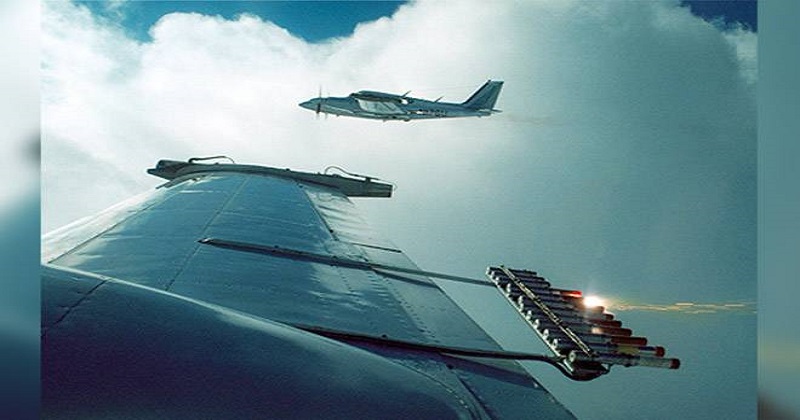
Stronger, faster, higher – together. During the Covid-19 pandemic, the International Olympic Committee couldn’t have chosen a more appropriate motto, a clarion call for solidarity and a message to the world that sport has united against a microscopic enemy. The over 11,000 athletes gathered in Tokyo for the Olympics have all endorsed it, as well as the 120-strong Indian contingent, which is licking its lips in anticipation. It will be the best chance for the country’s athletes to prove that despite pain, isolation, self-doubt and a sense of hopelessness, the raging virus can penetrate walls, invade training centres, but cannot destroy their dreams.
For the athletes, it’s all about their minds. There may be more at stake than that for the country’s shooters, who have the responsibility of inspiring a new generation of stars who will not simply be satisfied with Olympian titles. The Asaka shooting range will host two medal events on Saturday – men’s 10m air pistol and women’s 10m air rifle – to give a taste of what is to come.

Will Rajyavardhan Singh Rathore, who broke the glass ceiling in Athens 2004 by winning a silver medal in double trap, and 2008 Beijing gold medalist Abhinav Bindra continue to inspire the shooters or will they look inside for motivation? India’s medal hopes rest on an equally determined group of wrestlers, boxers, shuttlers and archers who will be galvanized by the shooters. Tokyo, which had hosted the first Olympics in Asia 57 years ago, offers the best opportunity to showcase its growing clout within the world of sports to the rest of the 127-member contingent.
SHOOTING STARS
Saurabh Chaudhary, Manu Bhaker and Elavenil Valarivan are set to add a new golden chapter to the history of shooting stars in the world cup over the last Olympic cycle. It appears increasingly unlikely that Bindra will remain alone in the gold club when the flame at the Olympic stadium in Tokyo burns out.
Likewise, the road to Tokyo for the country’s shooters was one of uncertainty and hardship after the Games were postponed by a year. Several of them recovered bravely after being ill with Covid-19 for weeks. While Croatia was devastated by a second wave of violence earlier this year, the shooters continued their training there. Nevertheless, the combined efforts of all stakeholders ensured that India sent the largest shooting contingent (15) to the Olympics. There is no way to predict their medal haul, but it will be better than what they took home at the 2012 Games, unless the virus spoils their best-laid plans.
FIGHTS ON THE RING & MAT
As boxers led by Amit Panghal and wrestlers led by Vinesh Phogat prepare to compete, they will focus on boxing and wrestling, two sports popular in rural India thanks to the flourishing akhadas and dangals. These athletes were among the luckiest, gaining enough training and competitive exposure overseas. As they took advantage of the opportunities, restrictions were not much of an issue. Panghal and Phogat brought much joy to their camps through a combination of foreign expertise and a flourishing natural talent. Others to watch out for include the veteran boxer MC Mary Kom, who wants to retire on a high note, and the wrestler Bajrang Punia in the men’s 65kg freestyle.
DARK HORSES
Weightlifters (Mirabai Chanu & Co.) and archers (Atanu Das, Deepika Kumar) arrive at the Games with high levels of enthusiasm. Archers are known for their tendency to choke on the big stage, which makes Atanu and Deepika a formidable mixed pair. Deepika won a hat-trick of gold medals at the Archery World Cup in Paris last month, but the women’s team failed to qualify. In the snatch, Chanu (49kg) has a technical glitch that has undermined her run in the clean and jerk. Both champions will receive a fortune cookie as a medal.

SINDHU & NEERAJ
PV Sindhu, the world champion and silver medalist at the Rio Olympics, carries the expectations of the entire country on her shoulders. As with her opponents, it’s been mostly practicing for the 26-year-old Hyderabadi. However, there are others capable of sabotaging Sindhu’s plans besides Spain’s Carolina Marin. The lanky shuttler has been the subject of rival analysis, but if Sindhu can stay composed, recover from difficult situations and stay focused, then another podium finish, if not gold, is surely in her future.
Former world junior champion Neeraj Chopra’s case is a little different. Haryana’s youngster has been subjected to lockdowns at national camps and has struggled to train and compete abroad. The javelin thrower is not in the best form going into the Games, but even if a podium eludes him, the tough competition will prepare him for future matches. Neeraj has an outside chance of surpassing Milkha Singh and PT Usha, but he would need to throw his career-best to do so. Both Kamalpreet Kaur and Tajinderpal Singh Toor have a good chance of excelling in the elite field.
Read more: Delhi’s illegal Rohingya camps cleared by UP

HOCKEY ARTISTS
Despite winning their seventh hockey gold in Tokyo in 1964, Manpreet Singh and his boys will have nothing to gain from nostalgia when they play New Zealand on Saturday. As they are in a tough group that also includes Olympic champions Argentina, Australia, Spain and Japan, India would rather focus on improving their eighth place from Rio 2016.
Hockey teams from around the world conceal their plans and tactics during the Olympic year, even in normal times. To make the quarterfinals, a top-four finish is essential. The entire game would be cloak-and-dagger with hardly any competition.

Post Your Comments